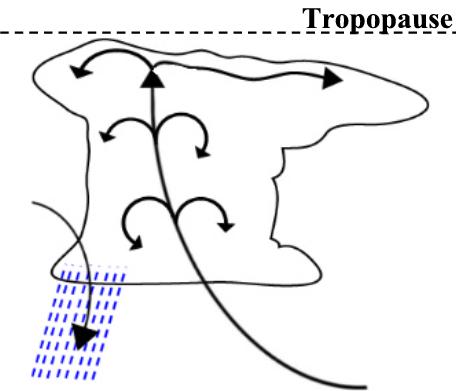  Building Atmospheric Giants Building Atmospheric Giants
The up and down motions associated with convection help fuel
monstrous thunderstorms. A thunderstorm feeds off of warm air
underneath it. Warm air near the ground rises because it's less dense.
When the air reaches the base of the cloud, water vapor in the air
condenses and builds onto the cloud. When the water vapor condenses
it releases some heat, which warms the air around it. This air now
rises because it's less dense, and the process continues again and again.
The air inside of a cloud continuously rises and falls, similar to a pot
of boiling water. The cloud continues to build on itself until it reaches
the tropopause, the point 10 - 12 kilometers above the ground where the
atmosphere becomes stable. The tropopause acts like a lid, and forces the
cloud to spread out at the top. This is why thunderstorms sometimes have
an anvil shape. The thunderstorm will continue to grow as long as has a source
of warm air underneath it. Once the supply of warm air is cut off, such as when
falling rain cools the air under the cloud, the massive cloud will dissipate.
|